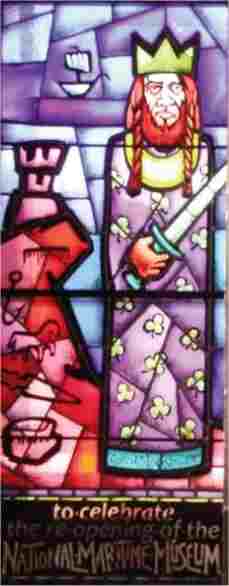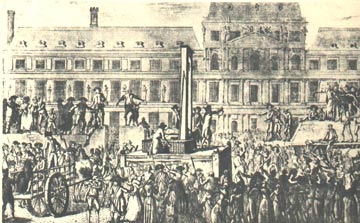|
Frescati House
Frescati House (sometimes misspelled 'Frascati') was a Georgian house and estate situated in Blackrock, Dublin. It was built in 1739 for the family of John Hely Hutchinson, the Provost of Trinity College. The house was acquired in 1970 by the owners of Roches Stores and, after a long campaign to save it, was demolished in 1983 to build the Frascati Shopping Centre. During the eighteenth century, Blackrock was favoured with the well-to-do of Ireland and grew into a fashionable seaside resort. The gentry of smog-ridden Dublin advanced into the area to embrace the sea air. It was around this period that a number of marine villas were built around Blackrock – including Maretimo, Carysfort, Lios an Uisce, Sans Souci and others. The Duchess In the 1750s, Hely-Hutchinson sold the house to the FitzGeralds, Ireland's largest landowners, who owned land throughout Leinster. Frescati became one of their three principal residences alongside Leinster House in Dublin and Carton House ... [...More Info...] [...Related Items...] OR: [Wikipedia] [Google] [Baidu] |
Georgian Architecture
Georgian architecture is the name given in most English-speaking countries to the set of architectural styles current between 1714 and 1830. It is named after the first four Monarchy of the United Kingdom, British monarchs of the House of Hanover, George I of Great Britain, George I, George II of Great Britain, George II, George III, and George IV, who reigned in continuous succession from August 1714 to June 1830. The Georgian cities of the British Isles were Edinburgh, Bath, Somerset, Bath, pre-independence Georgian Dublin, Dublin, and London, and to a lesser extent York and Bristol. The style was revived in the late 19th century in the United States as Colonial Revival architecture and in the early 20th century in Great Britain as Neo-Georgian architecture; in both it is also called Georgian Revival architecture. In the United States, the term ''Georgian'' is generally used to describe all buildings from the period, regardless of style; in Britain it is generally restricte ... [...More Info...] [...Related Items...] OR: [Wikipedia] [Google] [Baidu] |
Lord Edward FitzGerald
Lord Edward FitzGerald (15 October 1763 – 4 June 1798) was an Irish aristocrat and revolutionary proponent of Irish independence from Britain. He abandoned his prospects as a distinguished veteran of British service in the American War of Independence, and as an Irish Parliamentarian, to embrace the cause in Ireland of Catholic-Protestant reconciliation and of a sovereign republic. Unable to reconcile with Ireland's Protestant Ascendancy or with the Kingdom's English-appointed administration, he sought inspiration in the American Revolution and in revolutionary France where, in 1792, he met and befriended Thomas Paine. From 1796 he became a leading proponent within the Society of United Irishmen of a French-assisted insurrection. On the eve of the intended uprising in May 1798, he was fatally wounded in the course of arrest. Early years FitzGerald, the fifth son of the 1st Duke of Leinster and the Lady Emily Lennox (daughter of Charles Lennox, 2nd Duke of Richmond), wa ... [...More Info...] [...Related Items...] OR: [Wikipedia] [Google] [Baidu] |
Blackrock Town Hall, Library And Technical Institute
Blackrock Town Hall, Library and Technical Institute (), is a municipal complex in Main Road, Blackrock, Dublin, Ireland. The complex consists of a series of buildings formerly known individually as Blackrock Town Hall, Blackrock Library and Blackrock Technical Institute, but now accommodates the Blackrock Further Education Institute as well as an enlarged public library. History After significant population growth, largely associated with its development as a residential suburb of Dublin, the township of Blackrock appointed town commissioners in 1863. The town commissioners decided to erect a town hall at an early stage: the site they selected was on the north side of Main Street. The building was designed in the neoclassical style, built in ashlar stone at a cost of £3,500 and was completed in 1865. The design involved a symmetrical main frontage of five bays facing onto Main Street. The central bay, which was slightly projected forward, featured a round headed opening flanke ... [...More Info...] [...Related Items...] OR: [Wikipedia] [Google] [Baidu] |
Dún Laoghaire
Dún Laoghaire ( , ) is a suburban coastal town in County Dublin in Ireland. It is the administrative centre of the county of Dún Laoghaire–Rathdown. The town was built up alongside a small existing settlement following 1816 legislation that allowed the building of a major port to serve Dublin. It was known as Dunleary in the English language, until it was renamed Kingstown in honour of King George IV's 1821 visit, and in 1920 was given its present name Dún Laoghaire, the original Irish form from which "Dunleary" was anglicised. Over time, the town became a residential location, a seaside resort, the terminus of Ireland's first railway and the administrative centre of the former borough of Dún Laoghaire, and from 1994, of the county of Dún Laoghaire–Rathdown. Toponymy The town's name means "fort of Laoghaire". This refers to Lóegaire mac Néill (modern spelling: Laoghaire Mac Néill), a 5th-century High King of Ireland, who chose the site as a sea base from which to ... [...More Info...] [...Related Items...] OR: [Wikipedia] [Google] [Baidu] |
Merrion Square
Merrion Square () is a Georgian architecture, Georgian garden square on the Southside Dublin, southside of Dublin city centre. History The square was laid out in 1762 to a plan by John Smyth and Jonathan Barker for the estate of Richard FitzWilliam, 7th Viscount FitzWilliam, Viscount FitzWilliam. Samuel Sproule later laid out the East side around 1780 and the gardens were created through a competition won by Benjamin Simpson in 1792 thanks to drawings created by John James Barralet. All of the surrounding houses were largely complete by the beginning of the 19th century. Before the River Liffey was fully contained, floods on a high tide could reach as far as the square. In 1792, during one such event, the Duke of Leinster Augustus FitzGerald, 3rd Duke of Leinster, Augustus FitzGerald managed to sail a boat from Ringsend through a breach in the river wall as far as the north-east corner of Merrion Square (where it meets Holles Street). During the Great Irish Famine of the 184 ... [...More Info...] [...Related Items...] OR: [Wikipedia] [Google] [Baidu] |
Pembroke Place, Dublin
Pembroke may refer to: Places Australia * Electoral division of Pembroke, an electoral division in Tasmania * Pembroke Land District, formerly Pembroke County, Tasmania Bermuda * Pembroke Parish Canada * Pembroke, West Hants, Nova Scotia * Pembroke, Yarmouth County, Nova Scotia * Pembroke, Ontario Republic of Ireland * Pembroke, Dublin, a former township that is now part of the city of Dublin Malta * Pembroke, Malta New Zealand * Pembroke, the former name of Wānaka in Central Otago * Pembroke, New Zealand, a settlement northwest of Stratford, Taranaki * Mount Pembroke, a mountain in Fiordland United States * Pembroke, Georgia * Pembroke, Kentucky * Pembroke, Maine * Pembroke, Massachusetts ** North Pembroke, Massachusetts * Pembroke, New Hampshire * Pembroke, New York * Pembroke, North Carolina * Pembroke, Virginia * Pembroke Manor, Virginia, subdivision of Virginia Beach * Pembroke Park, Florida * Pembroke Pines, Florida * Pembroke Township, Kankakee County, Illinois ... [...More Info...] [...Related Items...] OR: [Wikipedia] [Google] [Baidu] |
Newgate Prison
Newgate Prison was a prison at the corner of Newgate Street and Old Bailey, just inside the City of London, England, originally at the site of Newgate, a gate in the Roman London Wall. Built in the 12th century and demolished in 1904, the prison was extended and rebuilt many times, and remained in use for over 700 years, from 1188 to 1902. In the late 18th century, executions by hanging were moved here from the Tyburn gallows. These took place on the public street in front of the prison, drawing crowds until 1868, when they were moved into the prison. For much of its history, a succession of criminal courtrooms were attached to the prison, commonly referred to as the "Old Bailey". The present Old Bailey (officially, Central Criminal Court) now occupies much of the site of the prison. History In the 12th century, Henry II instituted legal reforms that gave the Crown more control over the administration of justice. As part of his Assize of Clarendon of 1166, he required th ... [...More Info...] [...Related Items...] OR: [Wikipedia] [Google] [Baidu] |
Thomas Paine
Thomas Paine (born Thomas Pain; – In the contemporary record as noted by Conway, Paine's birth date is given as January 29, 1736–37. Common practice was to use a dash or a slash to separate the old-style year from the new-style year. In the old calendar, the new year began on March 25, not January 1. Paine's birth date, therefore, would have been before New Year, 1737. In the new style, his birth date advances by eleven days and his year increases by one to February 9, 1737. The Old Style and New Style dates, O.S. link gives more detail if needed. – June 8, 1809) was an English-born American Founding Fathers of the United States, Founding Father, French Revolutionary, inventor, and political philosophy, political philosopher. He authored ''Common Sense'' (1776) and ''The American Crisis'' (1776–1783), two of the most influential pamphlets at the start of the American Revolution, and he helped to inspire the Colonial history of the United States, colonial era Patriot ... [...More Info...] [...Related Items...] OR: [Wikipedia] [Google] [Baidu] |
Louis Philippe II, Duke Of Orléans
Louis Philippe II, Duke of Orléans (Louis Philippe Joseph; 13 April 17476 November 1793), was a French Prince of the Blood who supported the French Revolution. Louis Philippe II was born at the to Louis Philippe I, Duke of Orléans, Louis Philippe I, Duke of Chartres, and his wife, Louise Henriette de Bourbon, Louise Henriette de Bourbon-Conti. He was titled Duke of Montpensier at birth. When his grandfather Louis, Duke of Orléans (1703–1752), Louis, Duke of Orléans, died in 1752, his father became the new Duke of Orléans and Louis Philippe II became Duke of Chartres. When his father died in 1785, he became Duke of Orléans and First Prince of the Blood. He was styled as Serene Highness (). In 1792, during the French Revolution, Revolution, Louis Philippe changed his name to . He was a cousin of King Louis XVI and one of the wealthiest men in France. He actively supported the Revolution of 1789, and was a strong advocate for the elimination of the present absolute monarch ... [...More Info...] [...Related Items...] OR: [Wikipedia] [Google] [Baidu] |
Lady Edward FitzGerald
Stéphanie Caroline Anne Syms, Lady Edward FitzGerald (9 November 1831) was the wife of Lord Edward FitzGerald, the radical revolutionary and leading Society of United Irishmen, United Irishman, and was herself an enthusiastic supporter of Irish nationalism, Irish independence, scarcely less celebrated at the time than her husband. Her origins are uncertain. She was described as an adopted daughter of Stéphanie Félicité Ducrest de St-Albin, comtesse de Genlis, Félicité de Genlis; it is usually assumed that she was an unacknowledged daughter of Madame de Genlis and Louis Philip II, Duke of Orléans. However, according to her marriage registration, she was born in Fogo Island, Newfoundland and Labrador, Fogo, near Newfoundland (island), Newfoundland, the illegitimate daughter of Guillaume de Brixey and Mary Sims, and was taken to England, where she ended up in the Genlis household. During the French Revolution, the Genlis family fled to England. By then an attractive young w ... [...More Info...] [...Related Items...] OR: [Wikipedia] [Google] [Baidu] |






